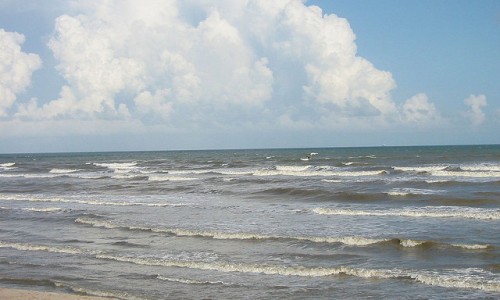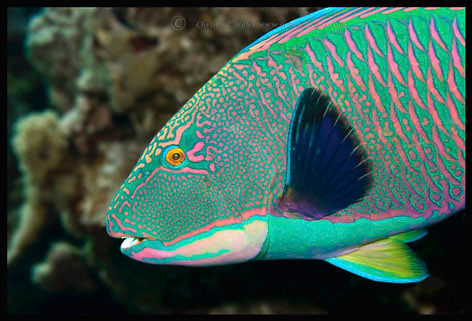Second, it seemed unreal that such a place existed, when my primary reference for the beach was the Gulf of Mexico, whose water is more of a brackish brown than a tourmaline blue thanks to the mud churned into it by the Mississippi River.
 |
| The Gulf of Mexico. From www.weathertemperature.net. |
 |
| Zamami, Okinawa |
Okinawa is dramatically different from the rest of Japan. The islands lack the four distinct seasons that are so highly prized by the Japanese. Since the territory lies at the same latitude as northern Myanmar, the weather vacillates between hot, hotter and hottest. The people in Okinawa are laid-back in a manner characteristic of cultures that live in hot climates. We saw scads of men with long hair, and men and women with prominently displayed tattoos. We also observed a fairly interesting trend in which all the businessmen were attired in dress slacks and Hawaiian shirts, a colorful diversion from the black trousers-white dress shirt uniform in mainland Japan.
Okinawa also possesses a unique history among the prefectures of Japan. The Meiji government assumed control of the islands in 1879, designating them a Japanese colony. Much of the Ryukyu culture indigenous to the islands was systematically suppressed; however, some of the aesthetics (architecture, art, etc.) remain. There are several movements concerned with the preservation of Ryukyu culture, which some feel is perilously close to dying out.
During WWII, the islands were the site of the bloodiest conflict in the Pacific Theater. Over 200,000 people (soldiers and civilians) died in the Battle of Okinawa. In case of an invasion by the Allies, civilians had been trained by the Japanese military to commit suicide rather than be apprehended by enemy soldiers. The Okinawans were considered to have too much valuable information about the Japanese military, and were therefore liabilities if they were captured or questioned.
On July 4, Paul and I briefly visited the Peace Memorial Park for the Battle of Okinawa, which was extensive and beautiful. Both of my grandfathers were in Okinawa during WWII; one of them served in the U.S. Navy on a ship stationed offshore. As we walked around, I tried to imagine what it must have been like for these young soldiers, most of whom had never left their hometowns, to be stationed someplace so exotic yet dangerous. My grandfather told my dad that while he was in Okinawa, a typhoon hit the flotilla, sinking a number of ships. For a man from the landlocked state of Kansas, he must have felt really far from home.
 |
| Names of the dead, Peace Memorial Park. |
BUT SERIOUSLY, OKINAWA IS AWESOME
Paul and I agreed that it was fortunate that we discovered Okinawa right as we were about to leave Japan, otherwise we would have spent every holiday there and ignored the rest of the country in favor of early morning swims, sunsets, and some of the most incredible stars I've ever seen.
 |
| Our favorite beach for morning/evening swims. |
 |
| Parrotfish. From www.flickr.com. |
| Though this is probably an aquarium, it's not unlike what we saw while diving. From commons.wikimedia.org |
Leaving Okinawa was a wrench. The scuba diving alone was one of the top 5 experiences of my life. However, it's all the more incentive to return to Japan. Next time, though, I may never leave.

No comments:
Post a Comment